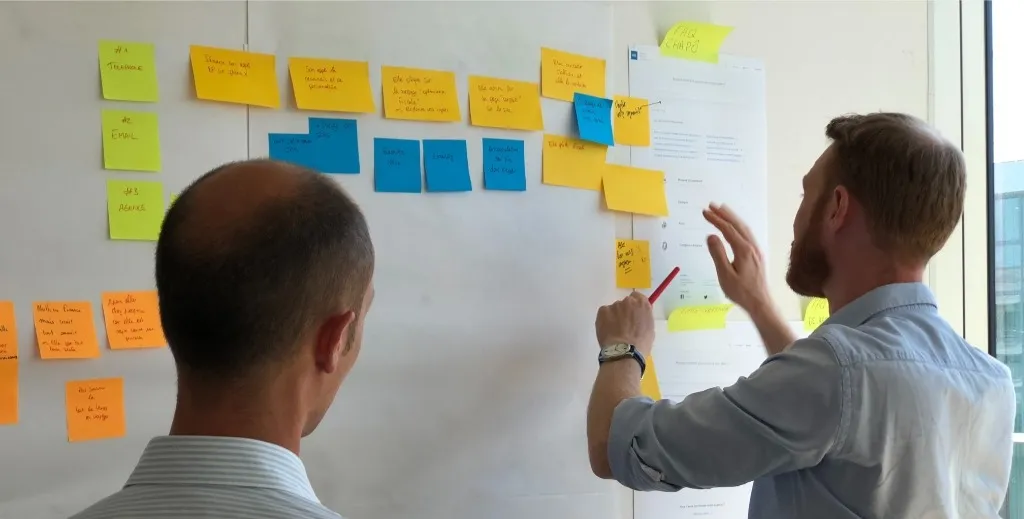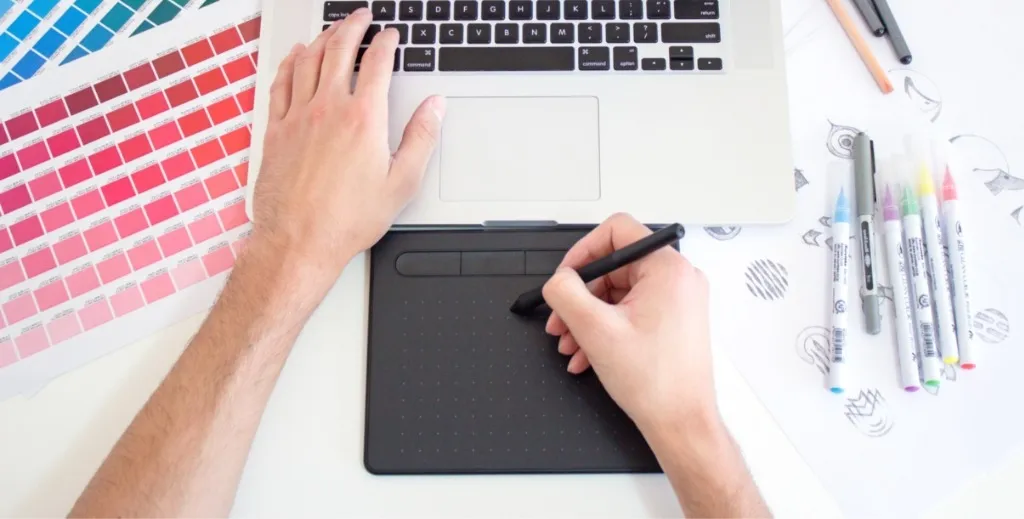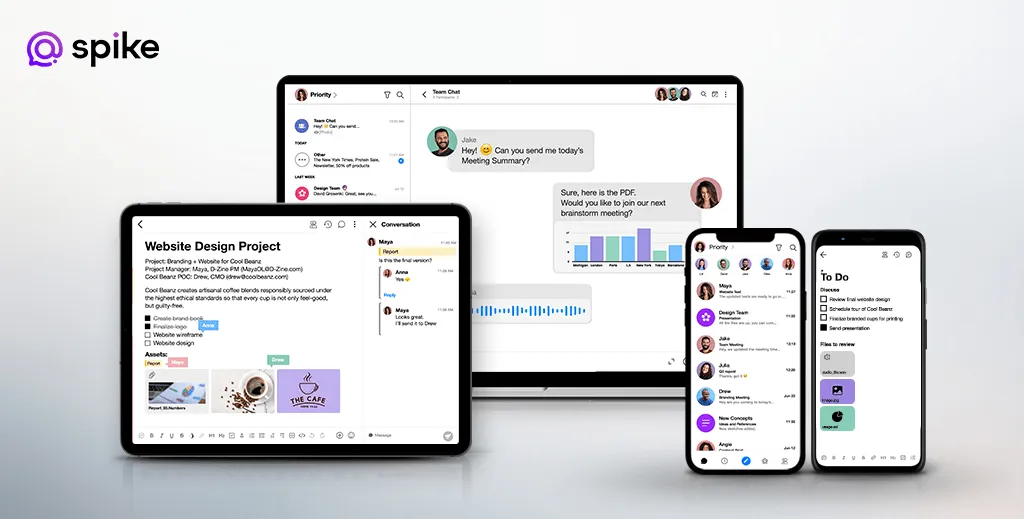The Top 7 Ways to Improve Communication Strategies for Design Teams

We are living in a time when communication is key. We can’t expect to get the job done without the right tools and processes in place. Design teams everywhere need to communicate their ideas better, and this means improving their communication strategies from start to finish: from initial client or stakeholder contact all the way through the final delivery of products (or services). Effective communication is essential for design teams to collaborate successfully and bring creative ideas to life. In this blog, we explore strategies for improving communication within design teams, tools for remote team communication, and strategies for handling conflicts and misunderstandings. Whether you’re a designer, project manager, or team leader, these insights will help you foster a more productive and harmonious design team.
Understand the Client and Their Expectations
One of the key factors in improving communication for design teams is understanding the client and their expectations. When everyone on the team has a clear understanding of what the client is looking for and what their expectations are, it helps to ensure that the team is all working towards the same goal. This can help to prevent misunderstandings and miscommunications that can derail projects and cause delays.
Here are a few tips for understanding the client and their expectations as part of improving communication for design teams:
-
•
Clearly define the project scope
Before starting any project, make sure that everyone on the team understands exactly what is expected of them. This includes the deliverables, timelines, and any specific requirements or constraints.
-
•
Communicate with the client regularly
It’s important to maintain regular communication with the client throughout the project. This helps to ensure that everyone is on the same page and can address any concerns or questions as they arise.
-
•
Ask questions
If you’re unsure about something, don’t be afraid to ask questions. It’s better to clarify things early on rather than assuming and potentially going in the wrong direction.
-
•
Stay organized
Use project management tools (more on better tools for designers later in the article) or keep clear and detailed notes to help you stay organized and on track. This can help to prevent misunderstandings and miscommunications down the line.
Focus on Effort Over Outcome

In any design project, it’s important for team members to feel recognized and valued for their contributions. One way to improve communication within a design team is to focus on commending effort over outcome. In other words, rather than simply praising the end result of a project, it’s important to recognize and appreciate the hard work and effort that went into creating it.
Here are a few reasons why commending effort over outcome can be beneficial for improving communication within design teams:
-
It promotes a growth mindset
By focusing on effort rather than outcome, team members are more likely to see challenges as opportunities for learning and growth. This can help to foster a growth mindset with positive and supportive team culture.
-
It helps to build trust
When team members feel that their efforts are being recognized and appreciated, it can help to build trust and foster a sense of teamwork and collaboration.
-
It helps to motivate team members
When team members feel that their hard work is being recognized, it can help to increase their motivation and engagement. This can lead to higher-quality work and more productive collaboration.
-
It helps to prevent burnout
Focusing on effort rather than outcome can help to prevent burnout by reducing the pressure to achieve specific results. This can help team members to feel more supported and motivated to continue working hard.
By focusing on commending effort over the outcome, design teams can improve communication and foster a more positive and productive team culture. This can lead to more successful projects and a more enjoyable work environment.
Host Weekly Design Presentations

Weekly design presentations are the perfect opportunity to show progress, share ideas, and get feedback. They don’t have to be complicated or fancy—they just need to happen.
To make this work for your team:
-
•
Schedule weekly design presentations with your clients in a time that works for both parties. If you’re doing them over video conference, be sure to have all the necessary equipment handy. You can do these presentations in a conference room or in your own office space as long as you have at least one computer monitor (or video camera) per person who will be presenting.
-
•
Keep it simple! Don’t worry about making elaborate presentation slides. Just make sure everyone on the team has their decks ready before each meeting so that they can quickly go through them during their allotted time slot without having to spend too much time preparing beforehand.
Communicate Methodology and Scope to Designers
When it comes to communicating with designers, the best practice is to set expectations for both sides. This means that the design team needs a clear understanding of what’s expected of them and how their role fits into a larger project. They also need to know what they can and cannot do, as well as how much time they have available to complete their tasks.
Designers need to understand who they are working with on the project (the client), who else will be involved (other design teams or third-party vendors), what has been done so far in terms of research or other deliverables, what information is available about users/visitors/customers etc., and any other pertinent details that might affect their ability to do good work quickly
Create a Design Review Process
Your team should create a design review process. This process will ensure that your team is reviewing designs at the right time and for the right reasons. The goal is to get feedback from all stakeholders on the decision-making process rather than simply getting opinions about what looks good or not.
The best way to do this is by making sure everyone has a voice in the conversation and by using consensus decision-making as much as possible. By allowing each person’s voice to be heard, you can avoid having one person dominate any discussion or decision—and everyone can take responsibility for their role in bringing a product through its lifecycle successfully!
Create a QA Testing Process for Designs
When you’re trying to define the scope of your QA testing process, remember: You want a lot of people involved in testing so that you can get as many perspectives on how well your work is communicating your message. However, it’s not just anyone who should be involved in testing; they should bring something specific to the table.
It’s important that someone other than the designer test the design. This is because designers tend to have a bias toward their own work and might not see issues or errors in what they create—and even if they do, they may not know how best to address them. It’s also important for someone other than yourself and/or your client(s) to be involved (again, meaning another stakeholder from outside of development). This helps ensure that everyone has an opportunity for input into what goes into the design so there are no surprises later down the road when someone else finds fault with something—and it reinforces good communication between all parties involved (which also happens during this phase).
Communication for design teams – Use case:
“The seen feature is insanely useful. I almost can’t believe I worked without it. Knowing when someone has read your message tells you so much more about how the project is progressing. It’s one of the best productivity apps we’ve come across.”
Read more about Max Shcherbakov, the co-founder and CEO of Hooligans, that uses Spike as a unified collaboration tool.
Establish Communication Routes Between Project Managers, Designers, and Clients
Establishing clear communication channels between project managers, designers, and clients is an important part of improving communication for design teams. When everyone knows how and when to communicate with each other, it helps to ensure that projects stay on track and that everyone is working towards the same goals.
Here are a few tips for establishing communication routes between project managers, designers, and clients:
-
•
Determine the primary method of communication
This could be email, phone, video conferencing, or a project management tool. It’s important to choose a method that works for everyone and ensures that everyone has the necessary tools and access.
-
•
Set clear expectations for communication
Make sure that everyone knows how often they should expect to hear from each other and what types of information should be shared. This can help to prevent misunderstandings and miscommunications.
-
•
Use project management tools
Project management tools like Asana, Trello, or Basecamp can help to keep everyone on the same page and ensure that important information isn’t missed.
-
•
Have regular check-ins
Scheduling regular check-ins, whether in person or via video conference, can help to ensure that everyone is on track and can address any concerns or questions that may have come up.
By establishing clear communication routes between project managers, designers, and clients, design teams can improve their communication and work more efficiently and effectively. This can help to foster a positive and productive working relationship and lead to successful projects.
Improve Your Tool Stack

You can definitely improve team communication strategies for designers by using the right tools. The problem is that there are a lot of tools out there, and it’s hard to know which ones are best. The key is not ending up with a “tool sprawl” where you have 10+ tools, and no one knows what to use for what. Spike’s digital workspace is a powerful tool for improving communication between clients and designers. With its range of features and integrations, it helps to streamline the design process and ensure that everyone is on the same page.
Here are a few ways that Spike's digital workspace can improve communication between clients and designers:
-
Real-time collaboration
Spike’s digital workspace allows team members to collaborate in real time, no matter where they are located. This means that designers can work closely with clients and provide updates and feedback as they go.
-
Chat-like interface
Spike’s chat-like interface allows designers to workshop designs quickly without the need for legacy email. This helps to streamline communication and ensure that everyone is able to collaborate in real time. This also allows for easy sharing of files and feedback, which can help to speed up the design process.
-
Centralized communication channels
With Spike Groups, all communication is centralized in one place. This makes it easy for everyone to stay up-to-date and ensures that important information isn’t missed.
-
File sharing
Spike makes it easy to share files with clients and other team members. This helps to reduce the need for email attachments and ensures that everyone has access to the most up-to-date version of a file.
-
1-click video meetings with screen sharing
Spike’s digital workspace includes a feature for 1-click video meetings with screen-sharing capabilities. This allows designers to have face-to-face meetings with clients and share their screens to discuss and review designs. This helps streamline the feedback and review process, keeping relevant team members and stakeholders easily aligned.
Overall, Spike’s digital workspace is a valuable tool for improving communication between clients and designers. Its range of features and integrations help to streamline the design process and ensure that everyone is working towards the same goals.
Wrap-Up on Improving Communication Strategies for Design Teams
In summary, effective communication is essential for design teams to successfully collaborate and bring creative ideas to life. By understanding the client and their expectations, focusing on commending effort over the outcome, and using tools like Spike, design teams can improve their communication and work more efficiently and effectively. These strategies can help to foster a positive and productive working relationship with the client and lead to successful projects. Ultimately, improving communication within design teams is key to achieving success and delivering high-quality work.
Gain Communication Clarity with Spike
You may also like
The 11 Top Collaboration Tools for Designers in 2023
Collaboration tools play a key role in helping designers bring their ideas to life. Check out the top eleven apps for designers in our detailed guide.
Read MoreThe 13 Best Mobile Apps for Graphic Design
Discover a wealth of useful graphic design apps that are perfect for freelancers, digital nomads, and anyone who is inspired outside of the office.
Read MoreFrom Cubicles to Couches: Is the Hybrid Workplace the Future?
Hybrid work—involving both remote and in-person tasks—increases productivity and flexibility at home while leveraging the social benefits of office gatherings
Read More



